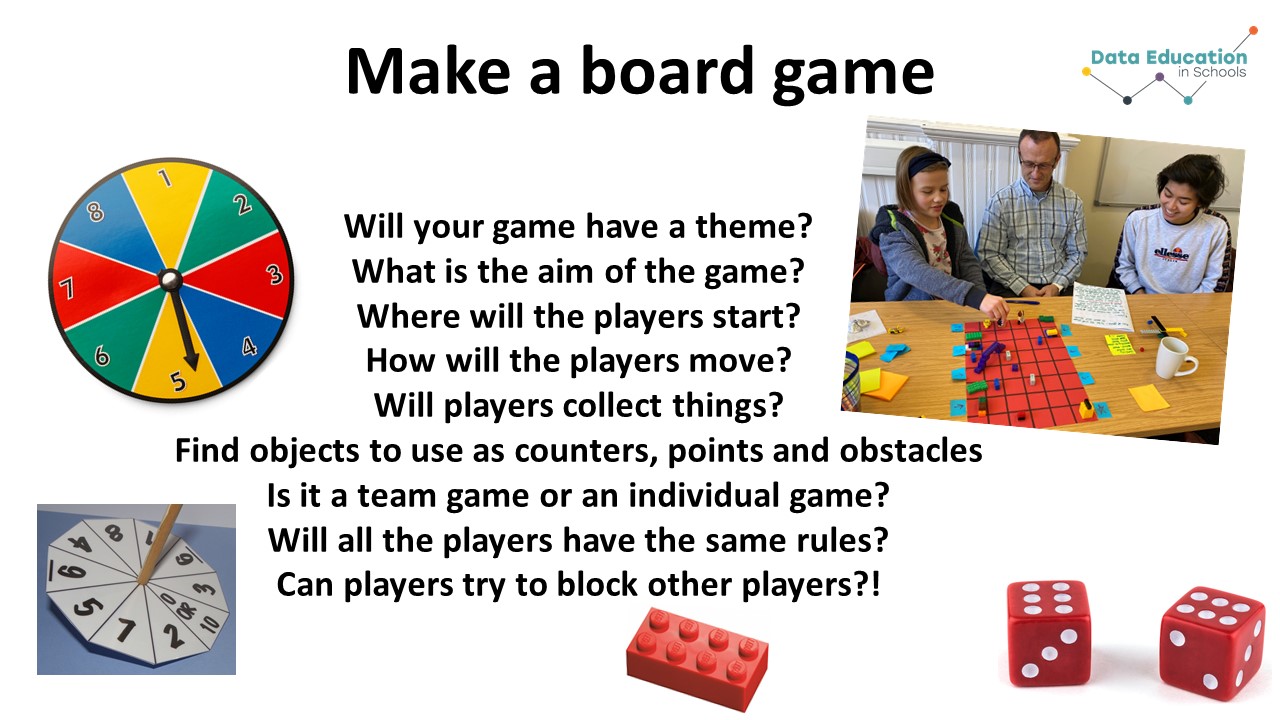Introduction
This resource encourages learners to consider the rules of a game. This in turn helps them to develop a simplified understanding of algorithms and computational thinking.
This activity can be one with a family group or a several groups in a classroom.
Materials
There is no required list of materials, young people can be as they creative as they wish with their game. The following provides an example of typical materials.
- pen and paper
- coloured pens/pencils/crayons
- prit stick/tape
- toy cars or figures (e.g. LEGO figures or Shopkins characters)
- Dice
Activity
- Start by playing a game you know, encourage the learners to think about the process of playing the game, get them to explain the rules as they make moves.
- Change 2 of the rules of the game. Make sure everyone understands the new rules and continue playing. If you are playing in a class, pass the new rules to another group.
- Are the new rules clear? Do they change the game?
- Now use the image below to start planning your game. When you think about the rules can you include:
- A Conditional Rule. For example if you roll a 5 then you take a particular action
- Repetition: Can you invent a trap that means a player just repeats the same action over and over again and can’t escape?

How does this activity support computational thinking?
- All games are a process
- To play the game you are following an algorithm
- When you change the rules or invent your own game you are creating your own algorithm.



